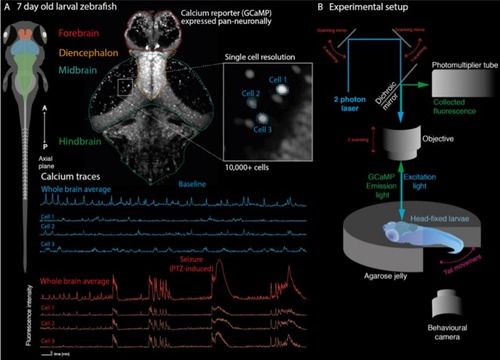FIGURE 2
- ID
- ZDB-FIG-200112-19
- Publication
- Rosch et al., 2019 - Functional Genomics of Epilepsy and Associated Neurodevelopmental Disorders Using Simple Animal Models: From Genes, Molecules to Brain Networks
- Other Figures
- All Figure Page
- Back to All Figure Page
|
Recording whole-brain dynamics at single-cell resolution in zebrafish models of neurodevelopmental disorders. |

